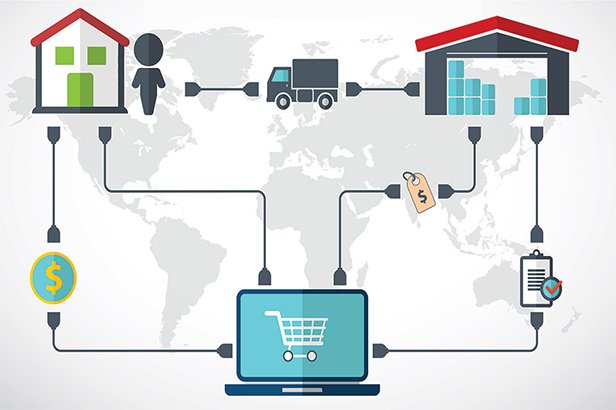
Too often, discussions surrounding EDI (Electronic Data Interchange) and APIs (Application Programming Interface) are framed as a fierce B2B technology debate. It's a false choice. As a user of technology, you're not stuck choosing one solution over the other, and in today's world of B2B data exchange, it's unlikely you can abandon EDI just because you have an API. The real question to consider is: should I use an API for EDI?
The answer? Yes. But not always.
When to use:
- If it provides the most efficient workflow
- You have a team in place to make it happen without a hitch
- Your EDI provider provides clear documentation
Having the proper workflow in place will drive the exchange of data in EDI. But B2B software users need to be sure the right pieces are in place before using API it for EDI transactions.
Complementary for B2B in retail.
Too often, an API is framed as a competitor to EDI. Fact is, APIs and EDI can function well together, and leverage their collective power to improve your B2B communications with trading partners.
EDI was initially created to simplify B2B communications, adding speed to the supply chain, providing security, and generating a valuable audit trail. Years after its launch, it still does all those things.
Newer companies, however, have definitely embraced APIs. Nimble, modern, flexible—it makes sense that organizations not tethered to legacy technology would see the value in using one.
Even though it is a legacy data sharing format, EDI is firmly ingrained in the retail industry and works too well to be disappearing anytime soon. As challenging as EDI may be, the risks associated with moving away from it are daunting, since change comes with many unknowns and the costs of such a shift are not insubstantial. Bottom line: don't expect to see waves of companies embracing a format other than EDI for their B2B transactions.
Solutions to Bridge the Divide
An overall shift in B2B communications towards APIs will continue. But EDI remains integral to retail supply chain communications and it is still the most effective way to exchange documents. So instead of debating EDI vs. API, let's talk about how to bridge the gap that exists between them.
Thanks to our years as a cloud-based software provider, we know the challenge well. We have often encountered companies that use APIs but need to connect with a retail trading partner that uses only EDI. Our focus has always been on providing solutions to make B2B communications as easy as possible for both parties.
Our in-house developer team will create the mapping and provide the clear documentation necessary to successfully integrate EDI with API. With Lingo, B2B users get quality architecture guidelines, along with references to seamlessly integrate with not only EDI, but online channels from Amazon to your own eCommerce store. Our RESTful API is an advanced technology, and it's a solution that many of our users use every day.
The Value of Connecting an API with EDI
Both APIs and EDI have pros and cons. The challenge is finding a solution that leverages the capabilities of both.
Integrating EDI with API, when it's done well, creates a seamless transfer of information and eliminates disruptions. With barriers removed, you get the most value from your data and add speed to your B2B supply chain. You'll also spend less time worrying about compliance issues with the right EDI integration in place.
When you work with an EDI provider who understands the value of both EDI and APIs, you'll enjoy the benefits of both.
Learn Why Integrating is Easy
No matter what kind of integration you need, our developers have the power to do it easily with the clear documentation of the Lingo API. Our team will work with you to create the most efficient workflow for your business.






